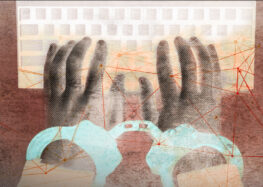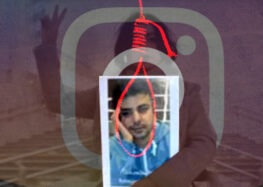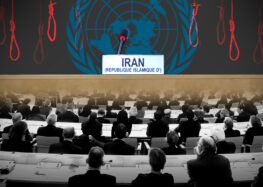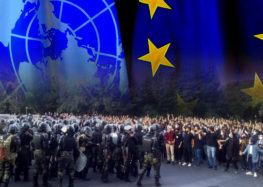Briefing: Tracking Twitter’s Growing Popularity in Iran
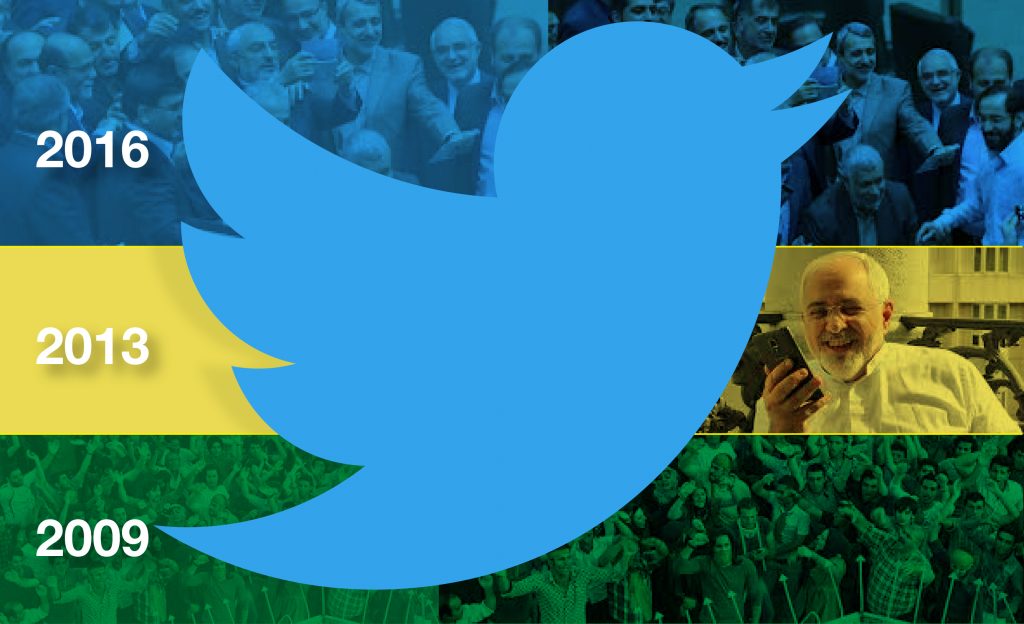
Twitter’s growth in Iran can be tracked through three distinct stages; when it was banned in 2009, during the nuclear talks in 2013-15, and after the ban was partially lifted in 2016.
Twitter was partially unblocked in Iran by the authorities during the last two months of 2016, paving the way for millions to access it, according to an investigation by the Campaign for Human Rights in Iran.
The quiet unblocking of the social media network in November 2016 was followed by an uptick in usage of the site by ordinary Iranians and officials.
The Iranian government has not made any announcements about why it suddenly lifted the ban on the micro-blogging site, filtered in the country since 2009, in November 2016. Nevertheless, the Campaign has learned that since then, many, though not all, internet services providers (ISPs) have allowed Iranians to access it.
Previously, people in Iran could only access Twitter with the use of circumvention tools or virtual private networks (VPNs), which allow users to bypass state-imposed filters.
@_ameeroo كجاش فيلتره؟ بنده همين الان بدون فيلترشكن در توييتر هستم. اينترنتم هم سيمكارت اعتباري همراه اول است.
— سیدکمیل باقرزاده (@sayyedkomail) December 28, 2016
Caption: “Filtered? I’m on Twitter right now without using circumvention tools. My internet is with a Hamrah-Aval prepaid SIM card.”
Iran banned Twitter in 2009 after it became a source of news about the state’s violent repression of widespread protests against the results of the country’s disputed presidential election that year. Nevertheless, people who were able to obtain access to circumvention tools continued to use it, while foreign media regularly turned to it as a gauge for understanding public opinion in the country.
Following Hassan Rouhani’s presidential election in 2013—while he and officials within his administration, along with some conservatives, amassed large followings on Twitter—calls for the social media site to be unblocked grew.
“Not only Facebook, but also other social networks have to be accessible, and there should be no legal constraints on accessing them,” said then-Culture and Islamic Guidance Minister Ali Jannati in March 2014, according to the semi-official Iranian Students News Agency (ISNA).
“We must not act defensively and reactively towards cyberspace and global communications,” said Ahmad Mazani, a reformist member of the Parliamentary Committee on Cultural Affairs, in an interview with Vaght-e-Iran on August 1, 2016. “We must be reasonable and the most logical decision right now would be to unblock Twitter as soon as possible.”
Reformist member of Parliament (MP) Mahmoud Sadeghi posted a public call on his personal Twitter page on November 13, 2016 requesting arguments to “convince” Iran’s principal online filtering body, the Working Group to Determine Instances of Criminal Content, to remove the ban on Twitter.
Iranian hardliners—including politicians and non-elected elements of the state such as the Revolutionary Guards (military force functioning alongside the traditional military) and the Basij (a volunteer militia force under the authority of the Guards)—that have long opposed internet freedom are meanwhile increasingly embracing Twitter as a necessary evil.
In December 2016, hardline cleric Komail Bagherzadeh went so far as to promote “wide-ranging professional Twitter classes” for the “dear ones on the front lines of the Islamic cultural revolution throughout the country.”
First Stage: Why Was Twitter Banned in 2009?
Twitter’s rise in Iran can be tracked through three phases, beginning in 2009, shortly before the government banned it.
In May 2009, Twitter was being used by approximately 8,654 people who had set their location to Iran, mostly concentrated in the capital city of Tehran, according to a study by the social media analytics company, Sysomos. That number had more than doubled to 19,235 by June 2009, after many Iranians poured into the streets to protest the election’s disputed result.
While protestors mostly mobilized themselves via word of mouth that year, including through in-person conversations, phone calls, and emails, Twitter was mainly used as a mass communication tool to disseminate information about state repression of the protests domestically and to the world outside.
Threatened by the sudden boom of western coverage of the tumultuous election, hardliners banned Twitter in 2009, along with many other popular websites including Facebook and BBC Persian. Foreign correspondents meanwhile had their press credentials revoked, forcing them to immediately leave the country.
In the absence of a free and unrestrained press in Iran, users inside the country utilized Twitter to bypass state censorship mechanisms and challenge government narratives aiming at concealing the brutality of the government’s violent crackdown on the protestors.
Despite the ban, Iran’s ultra-conservative supreme leader, Ali Khamenei, joined Twitter in 2009 and remains active on it while regularly describing it and other social media sites as a Western tool of regime change.
The internet and social media apps are heavily restricted and censored in Iran, with hardliners in the government viewing any form of internet freedom as a threat to the sanctity of the Islamic Republic.
In a speech on November 20, 2013 to a gathering of Basij commanders, Khamenei accused the US of using the internet and social media sites including Twitter to orchestrate the 2009 protests, which hardliners came to refer to as the sedition.
Khamenei used the US State Department’s request in June 2009 for Twitter to postpone scheduled maintenance on the site to avoid interrupting the protests as proof of his long-held opinion. Of course, while it’s common knowledge that the US prefers regime change in Iran, no evidence has been provided to show that Iran’s 2009 protests were anything but a homegrown movement.
During the 2009 sedition, he said, “one of the social networks (Twitter), which could be used to further the goals of the sedition and those who provoked the sedition, needed to fix some technical problems. The government of America asked this network to delay fixing these technical problems because they hoped to overthrow the Islamic Republic with the help of media activities and networks such as Facebook, Twitter and other such networks.”
The state’s obsession with controlling social media increased in the years to come, with every development being viewed as a plan to overthrow the Islamic Republic.
In December 2014, Col. Javad Ghanbari, the chief of the cyber police (FATA) in Khorasan Razavi Province, claimed “Twitter had the biggest role in the 2009 sedition.”
That same month he declared that “a meeting between the US president and the heads of Apple, Google, Yahoo and Twitter shows cooperation between the American intelligence services and tech super powers in order to reach a joint strategy to achieve their goals.”
Events real and fictitious were connected by hardliners to an alleged conspiracy between the US government and leading tech companies to overthrow the Iranian government.
Second Stage: Twitter Under Rouhani
Twitter’s popularity in Iran peaked between 2013-2015 during the final stage of talks between Iran and the P5+1 (the US, China, Russia, Britain, France and Germany) over the country’s nuclear program.
During this second stage of Twitter’s rise in Iran, the site became a forum for Iranian opponents and supporters of the deal to debate their opinions while many Iranians followed the negotiations on their smartphones and computers.
Some senior Iranian officials, including Foreign Minister Mohammad Javad Zarif, also broke with governmental norms by publicly voicing some of their views regarding the talks on Twitter and generating debate.
“Foreign Minister Zarif was using his Twitter account during the nuclear negotiations, making him a key source of news,” a reporter who asked not to be named for security reasons told the Campaign. “So not just reporters, but a lot of ordinary people joined Twitter, too.”
In early 2016, while Twitter was still technically banned in Iran, many of the country’s top officials, including several well-known hardliners, fully embraced the social network by getting their accounts verified by Twitter.
The hypocrisy of government officials using a website that they had blocked citizens from using was highlighted by medial outlets, which increasingly asked how officials could go on accusing Twitter of plotting to topple the government while at the same time joining the network in growing numbers.
“How is it that conservatives such as Gholamali Haddad-Adel and Saeed Jalili are using Twitter while at the same time defending the ban on the network?” asked Arman newspaper in a December 27, 2016 report on the uptick of Twitter usage by hardliners in Iran.
Iranian hardliners who are now active on Twitter include Ezzatollah Zarghami, a member of the Supreme Cyberspace Council, which has been instrumental in prolonging the ban on Twitter. He joined in August 2016.
The ultra-conservative editor of Kayhan newspaper, Hossein Shariatmadari, also joined Twitter in January 2017.
Numerous members of Iran’s Parliament also became active on Twitter in 2016, including conservative Deputy Speaker Ali Motahhari, and centrist members Nahid Tajeddin, and Mohammad Ali Vakili.
Journalistic Tool
A number of influential Iran-based reporters and publications that are active on Twitter have meanwhile helped boost the network’s popularity among Iranians.
“Many of the reporters working for Shargh, one of the country’s most popular reformist newspapers, have verified Twitter accounts,” said an Iran-based reporter, who spoke to the Campaign on the condition of anonymity. “Other newspapers have also done the same thing and are even looking to hire social media experts.”
Iran’s state-controlled international news channel, PressTV, as well as the Fars News Agency and Tasnim News—both affiliated with the Revolutionary Guards—also now have accounts in both English and Farsi.
Even the hardline judiciary’s Mizan News Agency, which has repeatedly advocated for maintaining the ban on Twitter and other social media sites, is now active on the network.
Business Tool
Top Iranian businesses have also embraced Twitter as a marketing tool, including Iran Air, the National Iranian Oil Refining and Distribution Company, and the country’s largest telecommunications provider, Irancell.
🎉دیجیکالا ده ساله شد🎊
👇🏻👇🏽👇🏾👇🏿
https://t.co/hYYO0jBdjZ pic.twitter.com/0yPLbANf6f— دیجیکالا | Digikala (@Digikalacom) February 15, 2017
Caption: Digikala promoting its products on Twitter.
Iran-based publishers that have joined Twitter to promote new works include Cheshmeh, Niloofar and Vida.
The Tehran Municipality, the reformist Iranian National Union Party, and the Imam Ali Society charity organization are more examples of the wide range of official and unofficial Iranian entities that have embraced Twitter.
Third Phase: Digital Battlefield
The increasing usage of Twitter by hardliners to promote their policies and the corresponding increased activity by Iranian civil society marks the third phase of Twitter’s growth in Iran.
Hardliners view Twitter as a front of the West’s soft war on the Islamic Republic. These ultra-conservative actors have long opposed the availability of the internet and social media in Iran, viewing them as platforms for opposition groups and dissidents to challenge the government’s policies.
On January 4, 2017, a group aligned with Iran’s security apparatus, the Soft War Young Officers (operating mainly via its website) published an article calling on supporters of the Islamic Republic of Iran to fulfill their patriotic duty by using Twitter to counter pro-reform voices.
“More than 10 years have passed since the supreme leader issued commands to prevent the harmful impact of cyberspace,” said the unsigned article. “However, opportunities have been lost and the government’s ineffective policies have not worked.”
“Not even unconventional policies have turned in results,” continued the article. “Now we cannot ignore opportunities on Twitter that could benefit our national security.”
“Through Twitter, the citizens of the Islamic Republic must display their power on the international stage,” said the article.
Followers of Khamenei formed the group in July 2009, after he gave a speech to a group of university students.
“Dear students, as you know, the Islamic Republic is currently faced with a great war—a soft war… Now, who should step into the arena in a soft war? Obviously, it is our intellectuals who should enter the arena,” he said.
“That is to say, you are the young officers on the battlefields of this soft war,” he added.
Research by the Campaign indicates that “trolls” (people who post inflammatory content onto online discussions to disrupt them) aligned with Iran’s security forces have accordingly been using Twitter more aggressively to intimidate and silence reform-minded reporters, politicians and rights activists.
A Tehran-based journalist who spoke to the Campaign on the condition of anonymity said that religious extremists and hardline clerics have also joined the intimidation campaign.
@mostafatajzade
اگر #مدافعان_حرم نبودند، مثل شمابجای بلبل زبانی به تکفیریها میگفتید آق دایی، درحالیکه مقابل چشمانتان #جهاد_نکاح میکردندبا… pic.twitter.com/mn15YY6S7N— حمید رسایی (@rasaee_ir) February 16, 2017
Caption: A conservative former MP using Twitter to publicly shame a political prisoner.
In November 2015, the Iranian Cyber Army, a conglomeration of groups that police internet usage in Iran according to the recommendations and orders of hardline governmental organizations, initiated a Twitter storm to make it appear like Khamenei has many supporters on Twitter.
The hashtag #Letter4You was used by many accounts created only for the campaign, and bots (web applications that run automated tasks) to promote an open letter by Khamenei to Western youth in November 2015.
On the other hand, Twitter has become a powerful tool for reformists, activists and their supporters to highlight their causes and concerns to domestic and foreign audiences.
In 2016, Twitter campaigns helped inform Iranians and Western news agencies and audiences about the struggles—which the Iranian government has tried to conceal by isolating prisoners and trying them in closed-door courts—of prominent political prisoners including Narges Mohammadi, Omid Kokabee, and Ali Shariati.
A Twitter storm at the end of 2016 in support of hunger-striking political prisoner Arash Sadeghi was followed by a promise by the authorities to consider some of his demands.
Iranians have also used Twitter as a means of communication with American audiences, which they have historically been kept away from due to the animosity between the US and the Islamic Republic since Iran’s 1979 revolution.
In February 2017, thousands of Iran-based users utilized the #LoveBeyondFlags hashtag to thank the Americans who protested against President Donald Trump’s travel ban on seven Muslim-majority countries including Iran.
“I don’t know your name, but I will never forget your kindness,” reads one widely shared tweet from the storm that also displays a photo of a smiling American woman holding the Iranian flag with a heart drawn into the center of it.
Some Americans joined the storm.
“In 1976, I lived in Esfahan,” tweeted American user Joe Hinck. “I was treated with only kindness by #Iranians. People unlike mountains can come together. #LoveBeyondFlags

